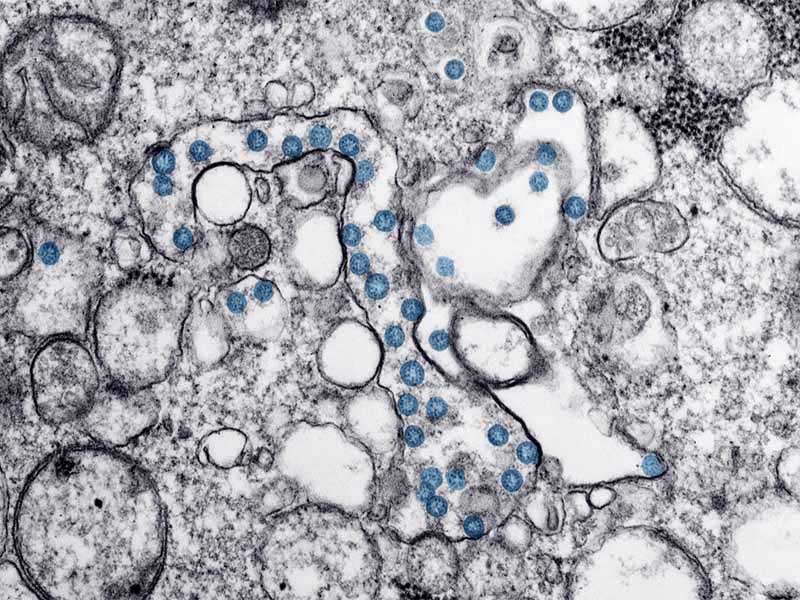AAFP Creates COVID-19 Member Community, Preparation Checklist
CDC Updates Interim Guidance for Physicians
March 11, 2020 05:12 pm News Staff -- As of noon on March 11, the CDC had received reports of 938 confirmed and presumptive cases of coronavirus disease 2019, with 29 deaths, from 38 states and Washington, D.C. Of those cases, the agency has determined that 92 are travel-related and 75 were spread through person-to-person contact within the United States; the rest of the cases remain under investigation.

And just hours before this AAFP News story posted, the World Health Organization officially declared the disease outbreak a pandemic -- the first to be caused by a coronavirus, said WHO Secretary-General Tedros Adhanom Ghebreyesus Ph.D., M.Sc., during a media briefing. Cases worldwide now number more than 118,000 in 114 countries, he added, with nearly 4,300 deaths.
In the midst of this swiftly evolving public health emergency, the AAFP is ensuring that the administration, Congress and federal agencies understand that family physicians are on the frontline of the pandemic, and they need better access to tools and equipment that will allow them to care for their communities while protecting themselves, their staff and their patients.
Meanwhile, the AAFP continues to work with the CDC and state/local health departments to compile the latest guidance you need to prepare for COVID-19 cases in your office, answer patient questions, recognize and manage cases, and prevent further spread -- all in one place. Check back often for updated CDC guidance and information on our advocacy efforts.
Resources from the Academy include a new checklist to prepare physician offices for COVID-19 that offers sections focused on
- office preparedness,
- triage and patient flow systems,
- referral or transfer of patients,
- proper waste disposal, and
- required equipment/supplies.
STORY HIGHLIGHTS
Another tool that already has proven useful to AAFP members is the new COVID-19 member community, where quick peer-to-peer conversations reveal real-world experiences and provide lessons learned from those already dealing with challenges posed by the disease.
New CDC Interim Guidance
On March 8, the CDC issued updated guidance on evaluating and testing patients for COVID-19 via its Health Alert Network.
The agency noted that this HAN update supersedes previous guidance and recommendations on evaluating and identifying patients that it shared on March 4 and Feb. 28.
The new guidance cites specific criteria to guide evaluation and laboratory testing for COVID-19 and encourages physicians to work with their local/state health departments to coordinate testing through public health laboratories.
And if you're looking for quick contact information for your local health department, the National Association of County and City Health Officials offers an interactive directory to point you in the right direction.
Additionally, the CDC has updated its guidance for patients who are at high risk for serious illness from COVID-19, recommending that they
- stock up on supplies (e.g., prescription and OTC medications, household items and groceries);
- take precautions and preventive actions such as avoiding close contact with others and frequent, thorough hand-washing;
- avoid crowds, cruise travel and nonessential air travel; and
- stay home during a COVID-19 outbreak in their community.
The CDC also has scheduled a Clinical Outreach and Communication Activity call from 2-3 p.m. EDT on March 12 to discuss interim considerations for infection prevention and control of COVID-19 in inpatient obstetric health care settings. Specific topics to be discussed range from guidance for prehospitalization to what should happen after discharge.
Health Care Personnel Exposure Guidelines
On March 7, the CDC posted updated interim guidance for risk assessment and public health management of health care personnel with potential exposure to COVID-19 in a health care setting.
The guidance provided updated recommendations on HCP contact tracing, monitoring and work restrictions in specific circumstances, including "allowances for asymptomatic HCP who have had an exposure to a COVID-19 patient (that would permit them) to continue to work after options to improve staffing have been exhausted and in consultation with their occupational health program."
Other updates included removing the requirement that these personnel self-monitor with delegated supervision, making it now optional for health care facilities to verify absence of fever and respiratory symptoms when HCP come to work.
In addition, the risk exposure categories have been simplified to focus on the
- presence/absence of source control measures;
- use of personal protective equipment by HCP; and
- degree/length of patient contact.
Finally, language has been added to advise HCP to inform their occupational health program if they've been exposed to the virus through travel or via community transmission as defined in the Interim U.S. Guidance for Risk Assessment and Public Health Management of Persons with Potential Coronavirus Disease (COVID-19) Exposure in Travel-associated or Community Settings. (Recommendations in that document apply primarily to U.S. jurisdictions that are not experiencing sustained community transmission.)